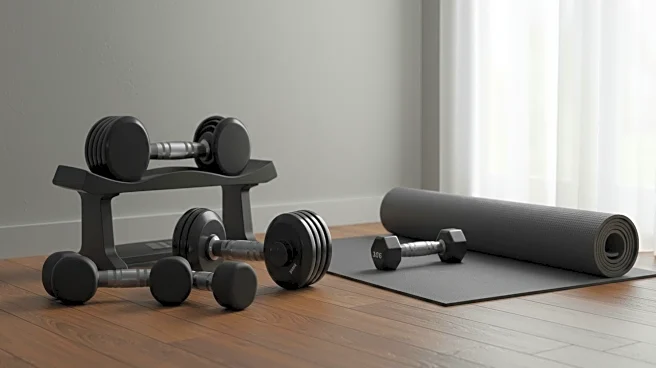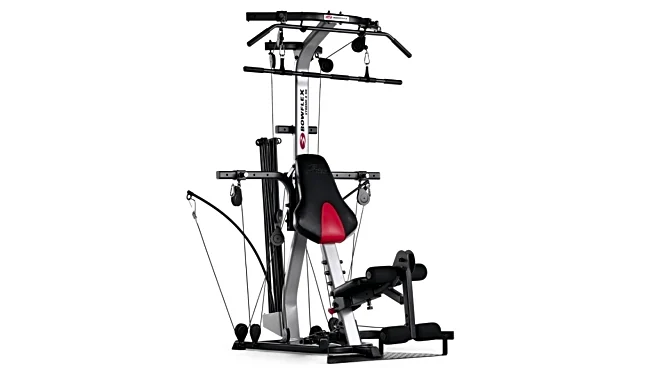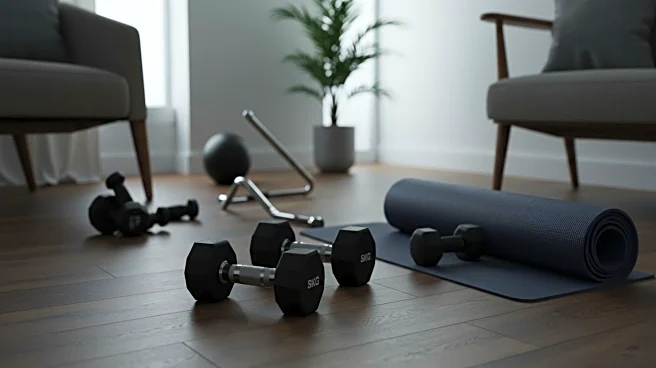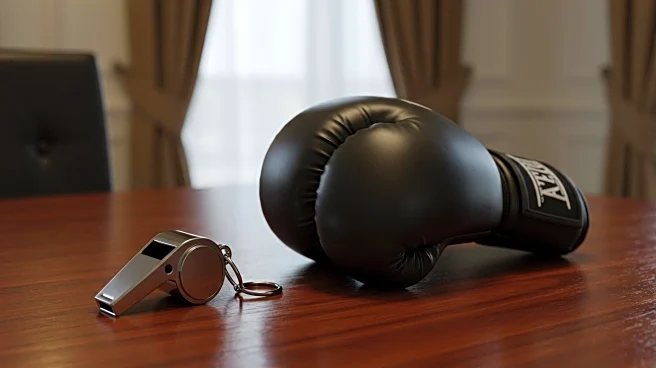What's Happening?
The mini stepper, a compact exercise device, is gaining traction among fitness enthusiasts for its affordability and effectiveness in providing a home workout solution. Priced under $50, the stepper is praised for its ease of use and minimal setup requirements, making it accessible to a wide range of users. It comes with adjustable resistance bands, allowing for a customizable workout that targets both the lower and upper body. Users have reported noticeable improvements in leg tone and overall fitness after regular use. The stepper's portability and small footprint make it ideal for those with limited space, as it can be easily stored under a bed or desk.
Why It's Important?
The growing popularity of the mini stepper reflects a broader trend towards home-based fitness solutions, driven by convenience and cost-effectiveness. As more individuals seek to maintain their health without the need for gym memberships, devices like the mini stepper offer a viable alternative. This shift could impact the fitness industry, with potential declines in traditional gym attendance and increased demand for home exercise equipment. Additionally, the stepper's ability to provide a comprehensive workout may appeal to those looking to improve cardiovascular health and muscle tone without investing in larger, more expensive equipment.
What's Next?
As the demand for home fitness equipment continues to rise, manufacturers may focus on enhancing the features and functionality of devices like the mini stepper. Innovations could include digital integration for tracking workouts and progress, as well as improvements in design for increased comfort and effectiveness. Retailers might also expand their offerings to include a wider range of affordable exercise equipment, catering to the growing market of home fitness enthusiasts. Furthermore, the trend could lead to increased competition among brands, driving down prices and improving product quality.
Beyond the Headlines
The mini stepper's popularity highlights a cultural shift towards self-managed health and fitness routines. This movement may encourage individuals to take greater responsibility for their physical well-being, potentially reducing healthcare costs associated with sedentary lifestyles. Additionally, the accessibility of such equipment could democratize fitness, making it available to a broader demographic, including those who may not have the means or time to attend a gym. The emphasis on home fitness could also foster community engagement through online platforms, where users share tips and experiences.












